How do registered dietitians eat to stay in tip-top health? Borrow a few of their best tips for an instant nutrition boost.
Our editors and experts handpick every product we feature. We may earn a commission from your purchases.
How do registered dietitians eat to stay in tip-top health? Borrow a few of their best tips for an instant nutrition boost.
Our editors and experts handpick every product we feature. We may earn a commission from your purchases.
Nutritionists are healthy eating experts. And although some of their advice is tried and true, they do have other secrets that could also set you up for successfully eating even better. Here are the tips and tricks you need to know.
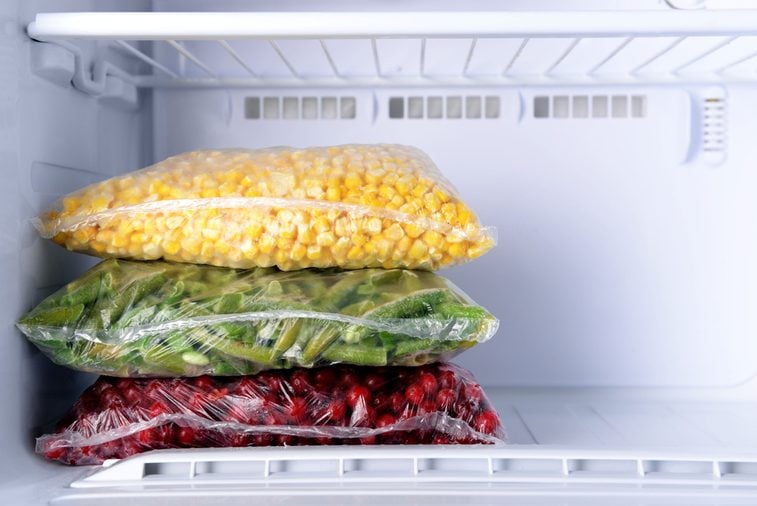
How many times have you ordered takeout or gone out to eat because you didn’t have enough food on hand? Or come home from vacation to find pretty much zero meal options? As a registered dietitian nutritionist, my top healthy-eating tip is this: Keep a supply of healthy pantry and freezer staples on hand at all times. Store items like pouches of quick-cook brown rice and quinoa, cans of beans, and frozen vegetables so you can easily whip up a healthy meal in a pinch. Start with these cheap and healthy meals you can make in 20 minutes or less.
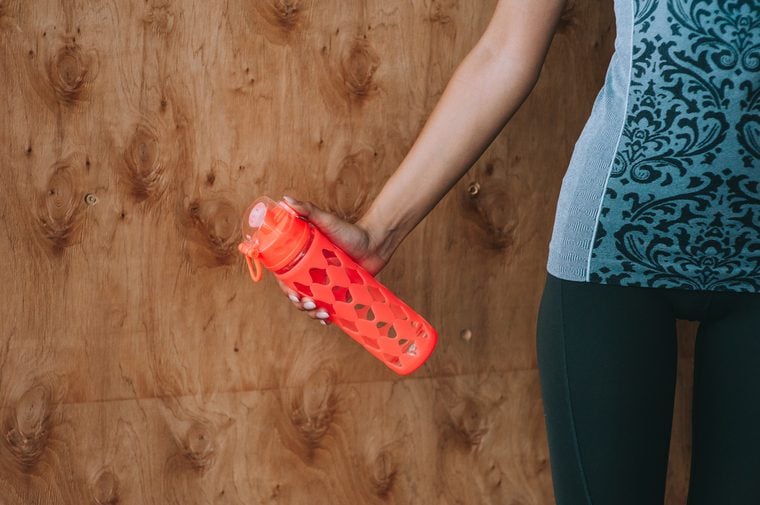
“Wake up and immediately drink 12 to 16 ounces of cool water,” suggests registered dietitians Lyssie Lakatos and Tammy Lakatos Shames, who are also personal trainers in New York City and co-authors of The Nutrition Twins’ Veggie Cure. “Since every process and chemical reaction in your body relies on water, this refreshing morning boost will increase your energy, boost organ efficiency, help flush waste out of your body, prevent constipation, and take up space in your stomach to help you prevent overeating. It’s one of the easiest things you can do to stay healthy and start your day off on the right foot.”
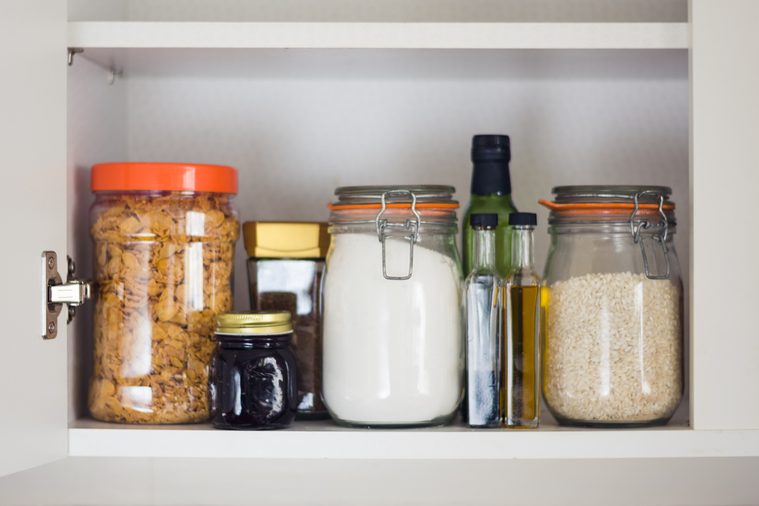
“There’s that good old saying, ‘you eat with your eyes,’ so make sure you can see all your healthy options in the fridge or pantry,” says Carlene Thomas, a registered dietitian in Leesburg, Virginia. “Use glass jars or glass storage containers for healthy options like pre-prepped produce, herbs, grains, and protein leftovers to make last-minute food decisions simple. When you’re at a loss for what to make, seeing the healthy, colorful options are inspiring and a good reminder to make sure nothing goes to waste and that you don’t order unnecessary takeout.” Learn more ways your kitchen setup can help you lose weight—without dieting.
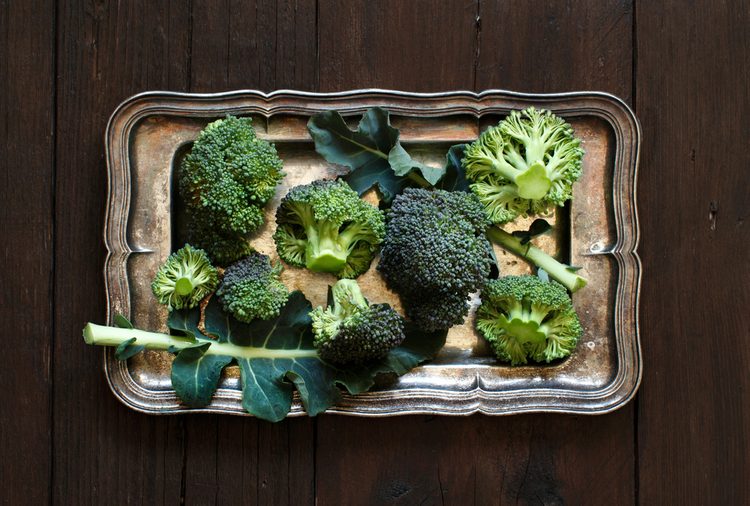
“My healthy-eating secret does double duty,” says Marisa Moore, a registered dietitian in Atlanta, Georgia. “And it’s simple. Eat your vegetables first. Non-starchy vegetables like broccoli, cabbage, and summer and spaghetti squash are full of flavor and fiber—so they taste good and keep you feeling full. I may mix in half zucchini noodles with spaghetti or keep it simple with olive oil and roasted broccoli, piled alongside a piece of salmon for dinner.”
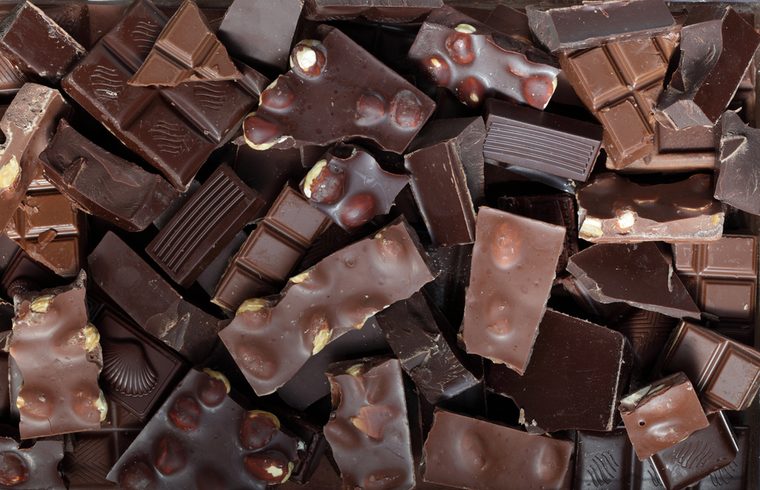
“Considering that [about 70 percent] of Americans eat too much added sugar, there’s a good chance you’re going above the limit,” says Samantha Cassetty, a registered dietitian in New York City. “One of the best ways to eat better is to cut back. Beyond the usual suspects like soda and desserts, sugar sneaks into our diet in seemingly healthy foods like granola bars, yogurt, and whole-grain hot and cold breakfast cereals. The goal is to have less than 25 grams per day for women and 36 grams per day for men. This is the equivalent of six and nine teaspoons, respectively. So compare labels and look for foods with simple ingredients and the fewest grams of added sugars. When a craving strikes, indulge in a bit of dark chocolate over baked goods and other treats. Not only will it satisfy your sweet spot, but eating dark chocolate has been shown to dial down a sweet tooth.” Try these 12 healthy desserts that can actually help you lose weight.

“I recently read about a small study that suggests when you relax before a meal and get your heart rate down, you are less likely to lose control,” says Dawn Jackson Blatner, a registered dietitian nutritionist in Chicago and author of The Superfood Swap. “So now before I eat my first bite, I take a couple of deep breaths to help me chill out. I definitely make fewer rushed food decisions and am less likely to overeat. Chill, chill, baby!” Don’t miss these other 10 weight-loss tips that have nothing to do with diet or exercise.
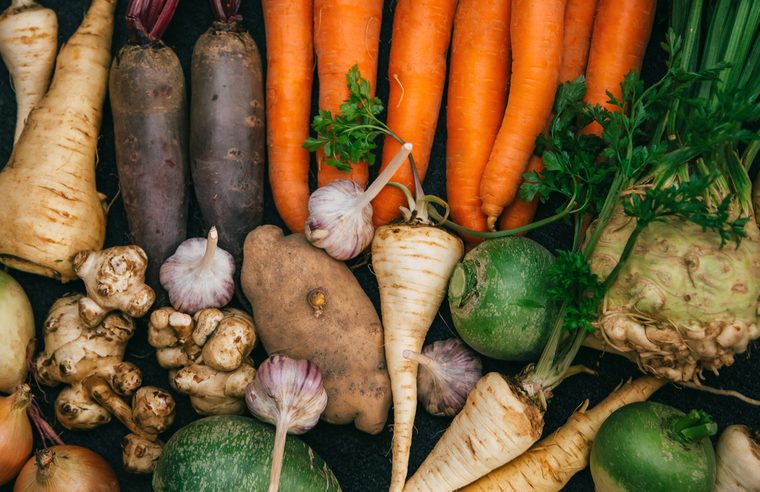
“I always tell my clients that the healthiest food is the food that is consumed closest to the original way Mother Nature intended it to be,” says Emily Kyle, a registered dietitian in Rochester, New York. “That is why my top healthy-eating secret is simple: to learn to connect with the story of your food. In a world where prepackaged, convenience foods rule, it can be too easy to forget about how our food has been grown, produced, potentially altered, shipped across the world, and eventually ended up on our plates. Taking a few minutes to reflect on the origin of our food can help us understand how close it is to its natural state, how nutritious it may or may not be for our bodies, and the environmental impact of that food choice.”
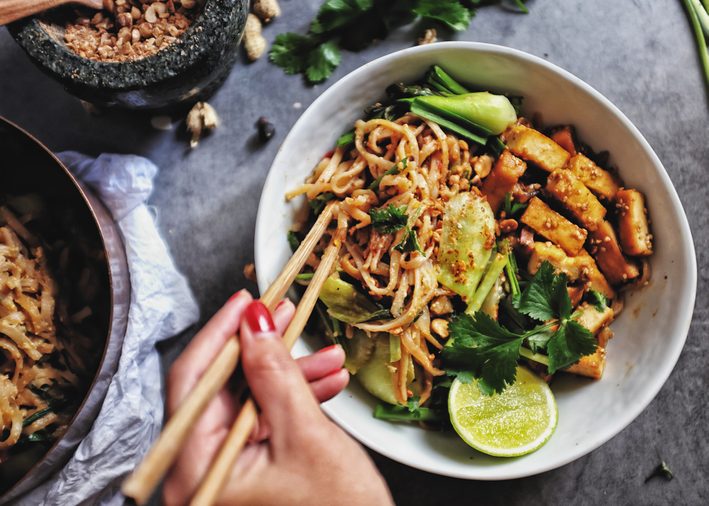
“I often flip the ingredient amounts to make a dish healthier and still satisfying,” says Patricia Bannan, a registered dietitian nutritionist in Los Angeles. “For example, instead of a bowl of ice cream with a few berries, I’ll have a bowl of berries with a spoonful of ice cream. Or instead of a plate of pasta with some veggies, I’ll have a plate of veggies with some pasta. A mix of steamed or roasted cruciferous vegetables works great with a smaller amount of pasta. Not only does this ingredient swap cut the calories in the dish, but the additional veggies provide nutrients like fiber, potassium, and vitamin A.”
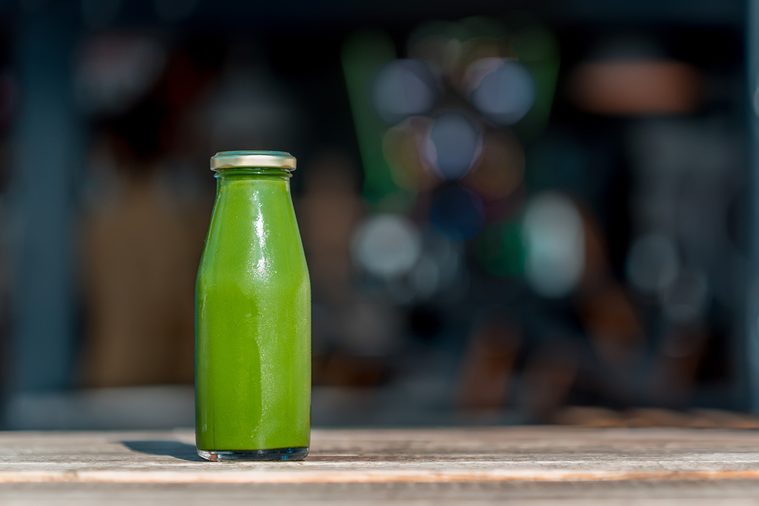
“I drink a 5.5-ounce can of V8 Original 100 percent Vegetable Juice after a tennis match to help me hydrate for only 30 calories,” says Toby Amidor, a registered dietitian in New York City. “Plus, I get one full serving of vegetables, with no added sugar. Per can, V8 also provides 320 milligrams of potassium, an important electrolyte mineral that helps with nerve function and muscle contractions.” These are 10 more of the best foods to eat after a workout.
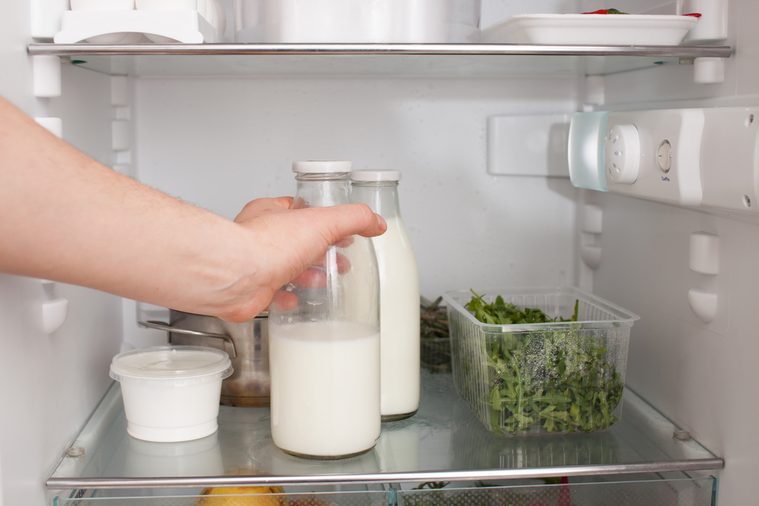
“My healthy-eating secret is listening to my body to determine when, what, and how much to eat,” says Kara Lydon, a registered dietitian and yoga teacher in Boston. “By tuning in to my body to listen for hunger and fullness cues and what I’m truly in the mood for, I cut out all the external noise telling me what I should and shouldn’t eat and allow for greater satisfaction with eating. This style of healthy eating, known as intuitive eating, has been associated with higher self-esteem, improved health, better body image, and lower rates of emotional eating and disordered eating.”
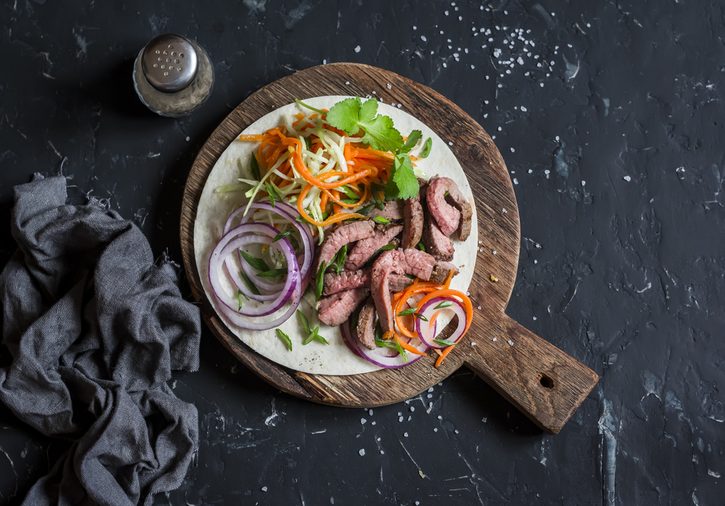
“Veggies are high in fiber, and research has shown that fiber can cause satiety,” says Keri Gans, a registered dietitian nutritionist and yoga teacher in New York City and author of The Small Change Diet. “By aiming to fill half your plate with nutrient-rich veggies, you will automatically consume fewer calories. This tactic can also help you to enjoy foods you really like but try and avoid, such as pasta.” Quit listening to the worst diet advice nutritionists have ever heard.
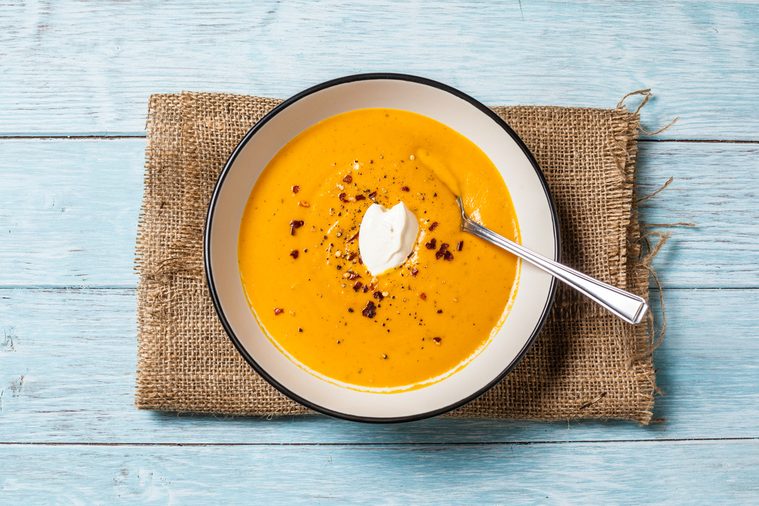
“When you’re engrossed in other activities—such as looking at a screen, driving, or working—you’re less likely to assess your fullness and may end up eating more than you need,” says Shahzadi Devje, a dietitian in Toronto, Canada. “Take the time to chew well and enjoy the flavors, versus gulping food down. This will help prevent unpleasant symptoms like bloating, gas, and indigestion. Healthy eating isn’t just about the ‘what’ but also the ‘how.’ So creating a mealtime atmosphere in which you’re eating with intention and attention is a sure way to healthy-eating success.”
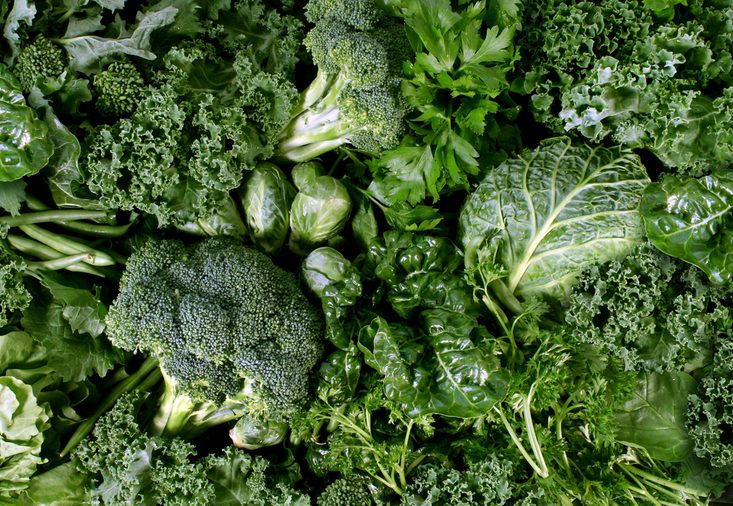
“Whether you call it vegetarian, vegan, or simply eating less meat and more plants, plant-based diets are one of the healthiest ways to eat for several good reasons,” says Ginger Hultin, a dietitian and a Seattle-based spokesperson for the Academy of Nutrition and Dietetics. “Studies show that vegetarian—including vegan—diets are healthful, nutritionally adequate, and may provide health benefits for the prevention and treatment of diseases, including ischemic heart disease, type 2 diabetes, hypertension, certain types of cancer, and obesity. These diets are appropriate for all stages of the life cycle, including pregnancy, lactation, infancy, childhood, adolescence, older adulthood, and for athletes. So anyone can benefit from eating healthy on a plant-based diet.” Whip up one of these 12 vegan meals for breakfast, lunch, and dinner.

“When it comes to snacks, opt for ones that pair fiber and protein,” says Mia Syn, a dietitian in Charleston, South Carolina. “These have the most staying power and can help ward off hunger until your next meal. Think fruits, veggies, or whole grains paired with foods like raw nuts, lean meat, or roasted chickpeas.” Here are 23 more ways to lose weight without a lick of exercise.
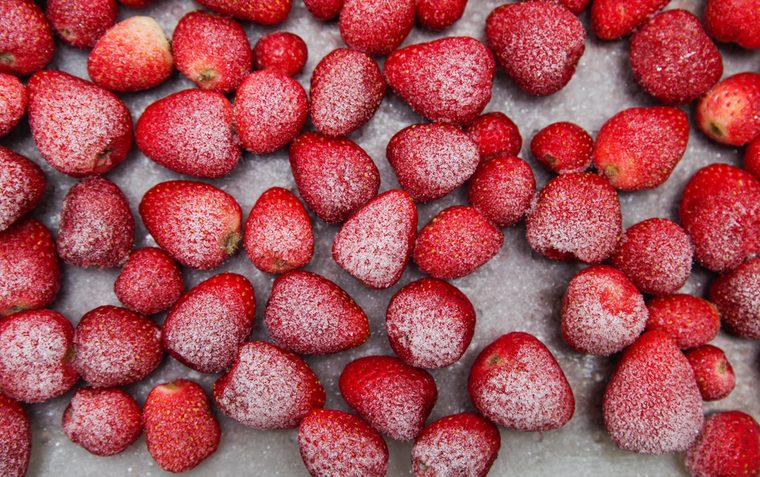
“The freezer is your best friend when it comes to healthy eating!” says Annessa Chumbley, a nutritionist in Indianapolis, Indiana. “It’s the most underutilized tool in the kitchen and the best for meal prep. It’s so much easier to eat healthy when you have healthy food around.” Here are a few ways Chumbley likes to utilize the freezer: “While you are dicing [an onion], go ahead and dice two, and place the extras in one-cup portions in zip-top bags. Strawberries can be frozen whole and used for antioxidant-packed smoothies, and egg omelets made in muffin tins freeze great for a protein-packed breakfast on the go.”

“Too often, we feel as though we have to clean our plates, eat the leftovers, or order food when out with friends,” says Katy Graham, a clinical dietitian in Nashville, Tennessee. “But really, we don’t! Reactive your innate ability to fuel your body by listening to your hunger cues, and feeling confident and proud of your dietary decisions. Eventually, you’ll end up craving more foods that are good for you, because they make you feel good!” Learn about 19 other “healthy” food rules nutritionists ignore.
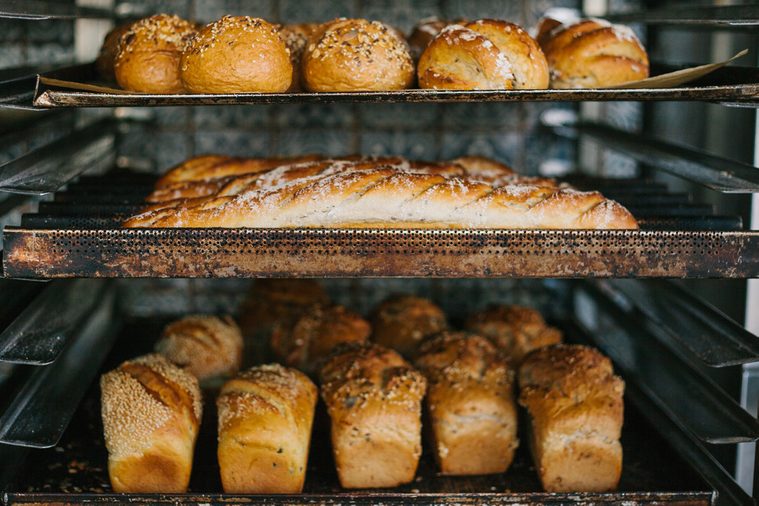
“When it comes to healthy eating, I always recommend incorporating whole grains into your diet,” says Natalie Rizzo, a sports nutritionist in New York City. “They are much higher in satiating fiber and protein than refined grains, and early research suggests that eating whole grains as part of a healthy diet may have a positive influence on gut health. Plus, another study found that eating whole grains instead of refined grains may slightly speed up your metabolism. My favorite way to incorporate whole grains is to make a simple sandwich on Dave’s Killer Bread Good Seed, which has six grams of protein, four grams of fiber, and 14 grams of whole grains per slice.” Steal these other 37 secrets nutritionists won’t tell you for free.